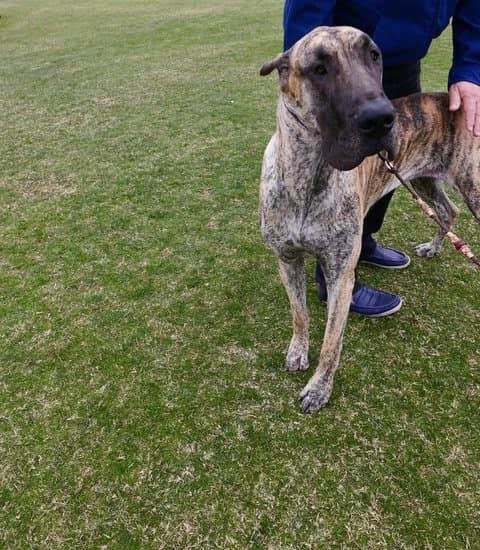How are fighting dogs raised and trained? The world of dog fighting is a dark and cruel reality that continues to persist despite efforts to stop it. From the history of dog fighting to the breeding and training process, there is much to uncover about this inhumane practice. Understanding the world of dog fighting is essential in raising awareness and taking action for the welfare of these mistreated animals.
Dog fighting has a long and disturbing history, dating back to ancient times and still existing in some parts of the world today. The breeding and selection process plays a crucial role in creating the perfect fighting dog, while early socialization and training methods are often cruel and abusive. Living conditions for these dogs are often harsh, with little regard for their well-being.
In this article, we will delve into the different aspects of dog fighting, including the impact on the dogs themselves, what happens during a fight, and efforts to stop this cruel practice legally. By understanding the grim reality of dog fighting, we can work towards raising awareness and taking action to put an end to this inhumane treatment of animals.
History of Dog Fighting
The practice of dog fighting can be traced back to ancient times, and has unfortunately persisted into the present day. Throughout history, dogs have been bred and trained for the purpose of engaging in brutal fights for entertainment and gambling. In ancient Rome, Greece, and other civilizations, dog fighting was a popular form of entertainment, with breeds like the Molossian hounds being specifically bred for combat.
As dog fighting evolved over time, it became more organized and widespread. In the 19th century, bulldogs were crossed with terriers to create a new breed known as the Staffordshire Bull Terrier, which became popular in the pit fighting rings of England. The Industrial Revolution also played a role in the spread of dog fighting, as workers sought out recreational activities to pass the time outside of their long work hours.
Unfortunately, even today dog fighting continues to exist in many parts of the world despite being illegal in most countries. The cruel practice persists due to underground networks that organize these fights in secret locations away from public view. Efforts to combat this issue are ongoing but challenging due to the secretive nature of those involved in this unlawful activity.
| Aspect | Information |
|---|---|
| History | Ancient Rome and Greece were known for their popular form of entertainment through dog fighting. |
| Breeds | Bulldogs were crossed with terriers in the 19th century England. |
| Legal Status | Dog fighting is illegal in most countries but underground networks persist. |
Breeding and Selection Process
The breeding and selection process for creating the perfect fighting dogs is a crucial and calculated method that aims to produce aggressive, strong, and powerful animals. Breeders typically start with specific breeds known for their athleticism, strength, and dominance, such as pit bulls, American bulldogs, or Akitas. The goal is to breed dogs that exhibit the desired traits for success in the fighting ring.
Breeding for Aggression
Breeders often selectively breed dogs with a history of aggression or fighting prowess in their bloodline. This can involve crossing siblings, parents, or other closely related dogs to amplify certain traits. Additionally, breeding techniques may include mating aggressive male and female dogs to produce litters with a higher likelihood of displaying aggressive behavior.
Selection Process
After the breeding process, rigorous selection criteria are applied to identify the most promising puppies for training and eventual participation in dog fights. Puppies are evaluated based on their physical attributes such as muscular build, jaw strength, stamina, and agility. They are also assessed for temperament and aggressiveness towards other animals.
The ultimate result of this breeding and selection process is a dog that has been specifically cultivated to excel in the brutal world of dog fighting. These practices perpetuate the cycle of violence and cruelty towards animals in the name of entertainment and profit. It is vital to understand these processes in order to effectively combat the pervasive issue of dog fighting around the world.
Early Socialization
Fighting dogs are raised and trained from a very young age in order to maximize their aggression and fighting capabilities. At the early stage of their lives, these dogs are bred for specific traits such as strength, stamina, and aggressiveness. The breeding process involves selecting the most aggressive and dominant dogs to produce offspring that will excel in the fighting ring.
Once the puppies are born, they are immediately exposed to an environment where aggressive behavior is encouraged. They are often isolated from human interaction and other dogs, which prevents them from developing normal social skills. Instead of being nurtured and loved, these puppies are subjected to harsh treatment that desensitizes them to pain and fear while also encouraging aggressive behavior.
In addition to isolating the puppies, they are also subjected to physical abuse in order to make them tougher and more resilient. This can include beating them with objects, using electric shocks, and tying them up in stressful or uncomfortable positions.
The goal is to create a dog that will not only be willing to fight but also inflict as much damage as possible on its opponent. This brutal treatment has long-lasting physical and psychological effects on the fighting dogs, often resulting in severe behavioral issues and health problems later in life.
| Aspect of Raising and Training | Description |
|---|---|
| Breeding Process | Selecting for traits like strength, stamina, and aggressiveness. |
| Early Environmental Exposure | Isolating puppies from normal socialization, nurturing or love. |
| Physical Abuse | Subjecting puppies to beatings or electroshocks for resilience. |
Training Methods
The training of fighting dogs involves the use of cruel and inhumane techniques that are designed to make them aggressive and fearless. Trainers often use physical abuse and harsh punishment to make the dogs more aggressive and ready for combat. These methods can include beating, starving, and isolating the dogs in order to create a sense of desperation and anger.
Some common training techniques used on fighting dogs include:
- Overexercising: Making the dog’s muscles strong through excessive exercise and conditioning.
- Positive reinforcement: Rewarding the dog for displaying aggressive behavior towards other animals or humans.
- Negative reinforcement: Using punishment or pain to discourage behaviors that are not considered aggressive enough.
In addition, some trainers also use other animals as bait, such as smaller dogs or cats, to encourage the fighting dogs to become more aggressive towards them. It is a disturbing and brutal way of conditioning the dogs for aggression and violence. This type of abusive training can have severe consequences on the physical and psychological well-being of these animals.
The sad reality is that these training methods only serve to perpetuate violence both within the animals themselves, as well as in society at large. It is crucial for animal welfare organizations, law enforcement agencies, and communities to come together to put an end to this cruel practice by addressing how fighting dogs are raised and trained.
Living Conditions
One of the most tragic aspects of dog fighting is the inhumane living conditions that these animals are subjected to. In order to maintain their aggressive nature and be prepared for fighting, these dogs are often kept in squalid, cramped, and dirty environments.
Often, they are confined to small cages or chains for long periods of time with little to no interaction with humans or other animals. This lack of socialization and mental stimulation can have serious detrimental effects on their overall wellbeing.
Some facilities where fighting dogs are kept may not provide proper shelter from extreme weather conditions such as heat, cold, or rain. Many dogs suffer from malnourishment and dehydration due to inadequate food and water being provided to them. Living in such deplorable conditions not only impacts the physical health of these animals but also takes a toll on their mental state.
The breeding and training process also significantly contributes to the harsh living conditions these dogs endure. Breeders and trainers often view the animals as expendable commodities rather than sentient beings deserving of care and compassion. As a result, the welfare of these dogs is prioritized much lower than profit margins and the desire for a successful fighting dog.
In order to end this cruelty, it is imperative that there is widespread awareness around how are fighting dogs raised and trained so that resources can be allocated toward rescuing these animals from such abhorrent conditions. Additionally, legislation needs to be implemented and enforced to hold individuals accountable for subjecting these innocent creatures to such suffering.
The Impact on the Dogs
Dog fighting has devastating effects on the physical and psychological well-being of the dogs involved. From the moment they are born, these animals are subjected to a life of abuse, neglect, and violence that leaves them with lasting scars. It’s important to understand the impact that dog fighting has on these animals in order to highlight the urgency of putting an end to this barbaric practice.
Physical Consequences
The physical consequences of dog fighting are numerous and severe. Many fighting dogs suffer from injuries such as deep puncture wounds, broken bones, and severe bruising as a result of their fights. These injuries often go untreated, leading to infections and long-term damage to the animals’ bodies. Additionally, these dogs are often deprived of proper nutrition and medical care, leading to a host of health issues including malnutrition, parasite infestations, and dental problems.
Psychological Consequences
In addition to the physical toll, dog fighting takes a significant psychological toll on the animals involved. These dogs are often kept in isolation or confined to small, filthy spaces for prolonged periods of time. This lack of socialization and mental stimulation can lead to extreme anxiety, fearfulness, and aggression. Many fighting dogs suffer from post-traumatic stress disorder (PTSD) as a result of their experiences, making it difficult for them to trust humans or other animals.
The Long-Term Impact
The long-term impact of dog fighting on the animals involved is profound. Even if rescued from their abusers, many fighting dogs struggle to adjust to life outside of the ring. They may exhibit behavioral issues such as fear-based aggression, separation anxiety, and distrust of humans. Reversing the damage done by years of abuse and neglect requires dedicated rehabilitation efforts by experienced professionals.
It is crucial for society to recognize the physical and psychological consequences that fighting dogs endure as a result of this cruel practice. Efforts must be made not only to end dog fighting but also to provide support and care for the animals that have suffered at the hands of their abusers.
The Fight Itself
The actual dog fight is the culmination of all the cruel and inhumane treatment that fighting dogs endure. These fights are often planned and organized by criminal organizations, with large sums of money involved in gambling on the outcome. The fights usually take place in hidden locations, such as abandoned buildings or remote areas, to avoid detection by law enforcement.
Before the fight begins, the dogs involved are often weighed to ensure a fair match. Then they are brought into a ring or pit where they are set loose to attack each other. The fights can last for several hours, with no regard for the suffering and pain experienced by the animals. Spectators cheer and place bets as the dogs viciously tear into each other, inflicting severe injuries that can be fatal.
Many fighting dogs are left with horrific wounds, including deep puncture marks, torn flesh, and broken bones. In some cases, they may even suffer from internal injuries or die as a result of the brutal encounter. The handlers of these dogs show little concern for their well-being during and after the fight – their only focus is on maximizing profits and advancing their reputation within the underground world of dog fighting.
Despite efforts to enforce laws against dog fighting, it continues to occur due to its profitable nature and the difficulty in identifying and prosecuting those involved. It is essential for society to recognize the severity of this issue and take action to combat it at all levels – from law enforcement cracking down on illegal operations to promoting ethical treatment of animals within our communities.
The Legal Battle
The cruel and illegal practice of dog fighting has prompted numerous efforts to put an end to this inhumane activity. Many animal welfare organizations, law enforcement agencies, and lawmakers are working tirelessly to stop the breeding, training, and fighting of dogs for profit and entertainment. These efforts are crucial in protecting the welfare of these animals and holding those involved in dog fighting accountable.
One important aspect of the legal battle against dog fighting is the implementation and enforcement of laws specifically targeting this barbaric practice. Many countries have enacted legislation that criminalizes dog fighting, prohibits breeding dogs for fighting purposes, and imposes strict penalties on those who participate in or organize dog fights. Additionally, there are laws aimed at seizing and confiscating fighting dogs from their owners, ensuring they receive proper care and rehabilitation.
Another essential component in the fight against dog fighting is education and awareness. Many organizations focus on educating the public about the realities of dog fighting, including how dogs are raised and trained for this purpose. By raising awareness about the cruelty involved in dog fighting, these organizations aim to change societal attitudes towards this illegal activity.
Furthermore, efforts to support interventions for at-risk individuals who may be involved in dog fighting are also crucial. Providing resources for rehabilitation programs that address underlying issues such as poverty, violence, and lack of education can help prevent people from turning to dog fighting as a means of making money or gaining status within their communities.
By addressing root causes and offering alternative paths for individuals involved in or at risk of engaging in dog fighting, these interventions contribute to the overall fight against this cruel practice.
Conclusion
In conclusion, the world of dog fighting is a brutal and inhumane practice that has been ongoing for centuries. From the history of dog fighting to the breeding and training methods used to create fighting dogs, it is evident that these animals endure immense suffering from a very young age. The living conditions and the impact on the dogs, both physically and psychologically, further emphasize the need for awareness and action to address this issue.
The question “How are fighting dogs raised and trained” highlights the importance of understanding the cruel techniques used to mold these animals into aggressive fighters. Early socialization plays a crucial role in shaping their behavior, while training methods involve violent and harsh practices aimed at turning them into lethal combatants. The breeding process also contributes to creating dogs with specific physical and behavioral traits that make them more effective fighters.
It is essential for society to come together in efforts to put an end to dog fighting through legal measures and awareness campaigns. By recognizing the suffering endured by fighting dogs and taking action to promote their welfare, we can work towards creating a future where these animals are no longer exploited for human entertainment. It is our moral obligation to advocate for the protection of all animals, including those forced into the cruel world of dog fighting.
Frequently Asked Questions
How Are Dogs Bred for Fighting?
Dogs bred for fighting are often the product of selective breeding for aggressive traits. Breeders may choose dogs with a history of fighting or aggressive behavior to produce offspring with similar tendencies. These dogs are often raised in an environment that encourages aggression and hostility towards other animals.
How Are Dog Fighting Dogs Treated?
Dog fighting dogs are typically treated very poorly. They may be kept in poor living conditions, chained up or confined to small spaces, and subjected to brutal training methods to encourage aggression. Injuries sustained during fights are often left untreated, resulting in significant suffering for the animals involved.
Can You Train Dogs to Stop Fighting?
Yes, it is possible to train dogs to stop fighting. With the help of a knowledgeable trainer and plenty of patience, dogs can be taught alternative behaviors and responses to conflict that do not involve aggression or violence. Positive reinforcement training methods can help redirect their behavior and teach them new ways of interacting with other animals.

Welcome to the blog! I am a professional dog trainer and have been working with dogs for many years. In this blog, I will be discussing various topics related to dog training, including tips, tricks, and advice. I hope you find this information helpful and informative. Thanks for reading!





